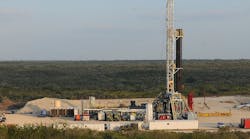“We have tried to use our good will to encourage each party, particularly their security forces, to not get into violent situations. We’ve had some success, but it’s a process where there’s some ways to go.”—Richard J. Schmierer, US ambassador to Oman
A coalition of eight environmental and public health organizations raised objections similar to refiners’ in opposing a petition for federal approval to raise allowable US gasoline levels to 15%.
It wasn’t surprising that refiners opposed Growth Energy’s request for US Environmental Protection Agency approval to increase gasoline ethanol levels to 15% as the public comment period ended on July 20.
The fuel ethanol advocacy organization argues that allowing an ethanol level higher than 10% will increase jobs. Opponents, including the American Lung Association, the Center for Auto Safety, the Sierra Club, and the Natural Resources Defense Council, contend that it could simply create problems.
Their primary concern is similar to that of the National Petrochemical & Refiners Association. “Ethanol should not be blended into gasoline at levels higher than 10% for use in nonflexible fuel motor vehicles and nonroad gasoline-powered engines until comprehensive and independent testing shows that midlevel ethanol blends are safe for consumers and do not harm the environment or public health,” NPRA said in its comments.
Incomplete science
“The science regarding the impact of midlevel ethanol blends on consumer safety, engine performance, and potential environmental harm has not been completed, and likely will not be completed for at least 2 years,” NPRA told EPA. It called the information Growth Energy submitted to EPA in support of the petition “a woefully inadequate foundation upon which to base such an important change in the nation’s supply of gasoline.”
The eight-group coalition noted that the 2007 Energy Independence and Security Act included a new requirement for the EPA administrator to make an applicant demonstrate that a new fuel will not cause emissions device or systems failures in off-road engines. It said that Growth Energy has not done this.
NPRA also said that potential approval of Growth Energy’s petition is not an effective short- or medium-term solution to avoiding the “blendwall” problem caused by the increasing conventional biofuels volumes mandated under EISA.
Below mandate
It explained that while ethanol is currently blended into about 75% of all the gasoline sold in the US, mandated volumes of conventional and cellulosic biofuels are so high that making all gasoline 10% ethanol will fall short of EISA’s compliance goal.
“However, EPA should not rush approval of E15 in order to postpone the blendwall,” it continued. “The agency should make a scientifically sound decision based on an analysis of the safety of midlevel ethanol blends for use in all US gasoline-powered motor vehicles and engines. Safety is paramount.”
The coalition agreed, telling EPA, “We believe that the combination of hurdles, not all of which have been identified, virtually assures that E15 could not be marketed in substantial volumes for multiple years.”

